Guidance on electricity for classroom checklist
Sockets & Switches
Sockets and switches need to be undamaged (no cracks, missing parts, loose parts or burn marks) and the switch mechanism must have a positive action (e.g. requires a small level of force to change position, and once moved remains in the new position). For 3-pin socket outlets check for broken shutters on the live and neutral pin openings (these are the horizontal openings, the vertical (earth) pin opening does not have a shutter).
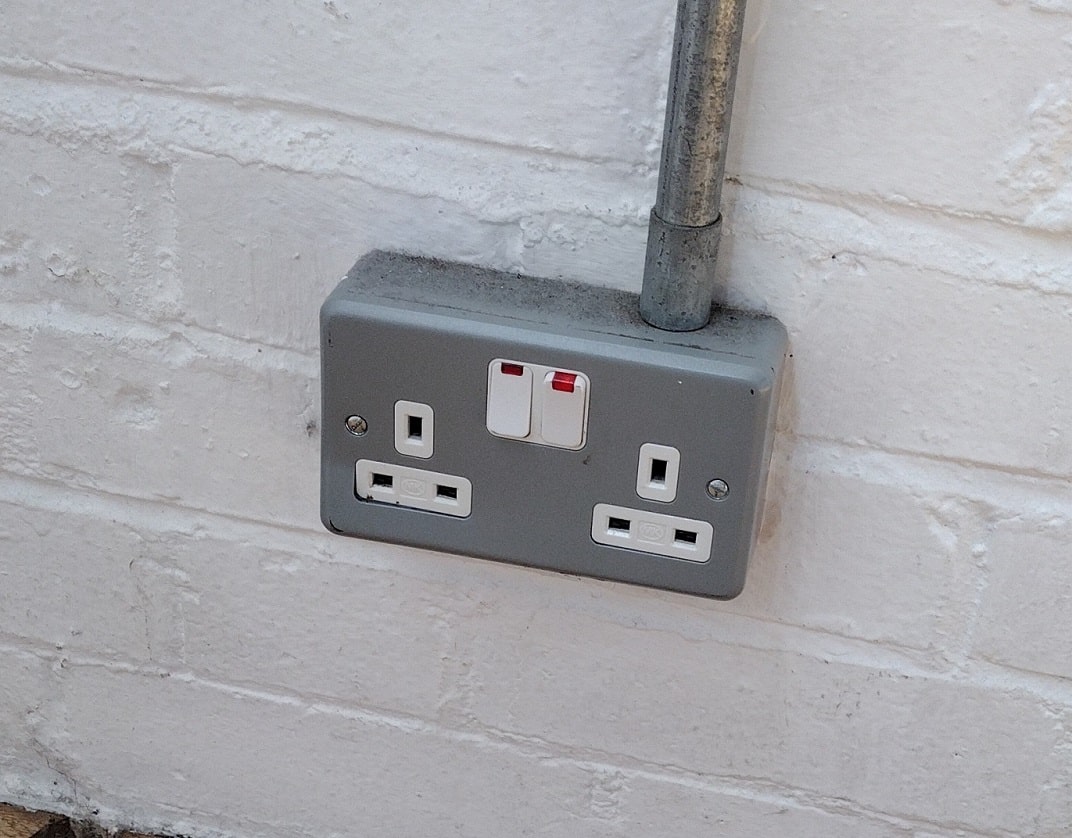
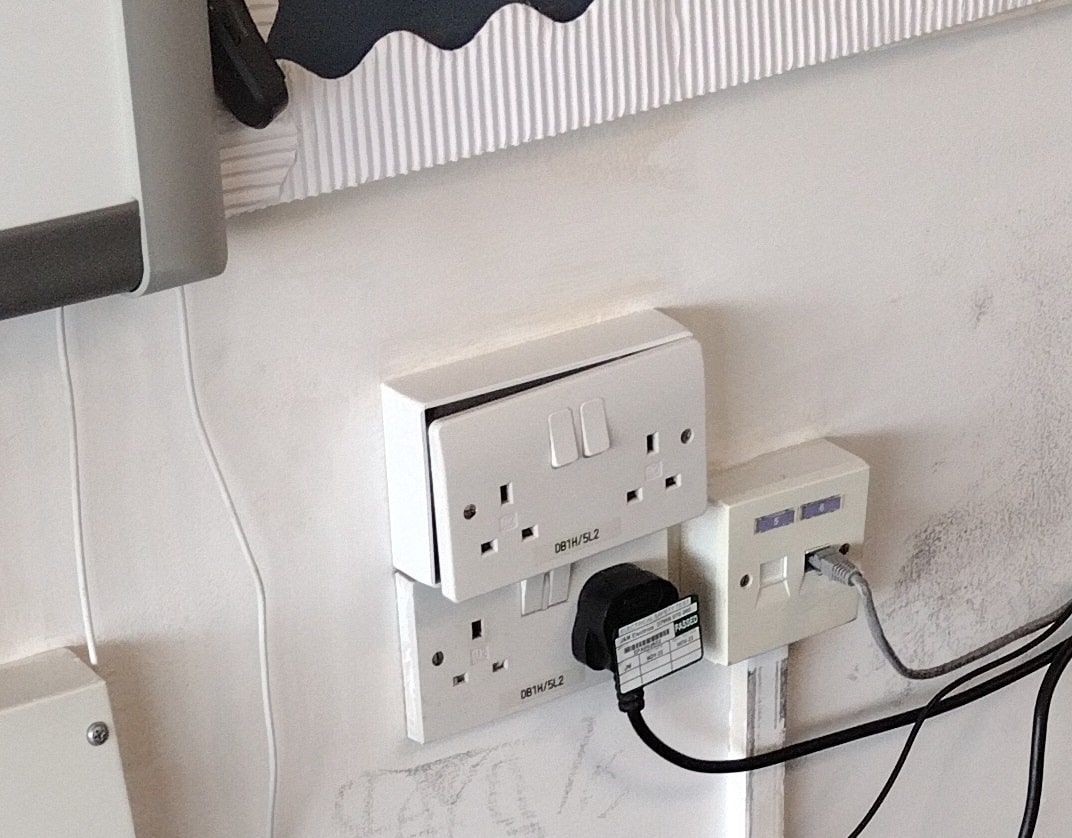
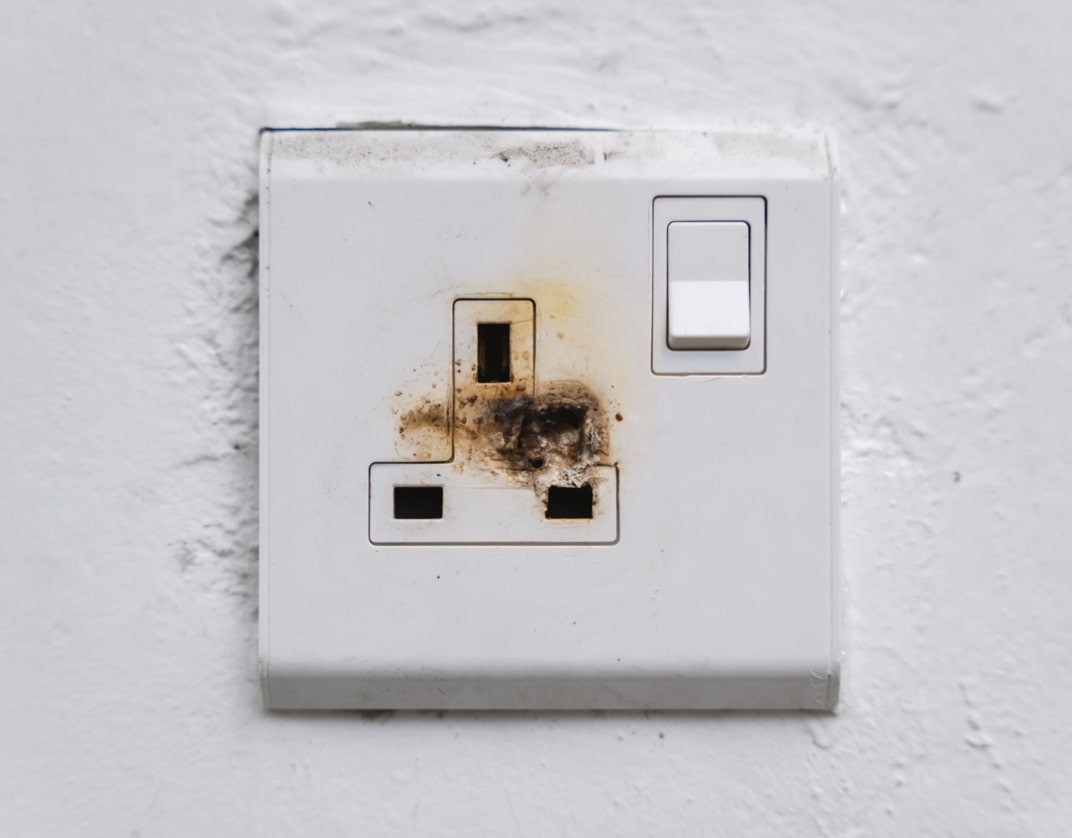
pressed in plastic insert
loose faceplate
socket outlet with burn marks from overheating plug
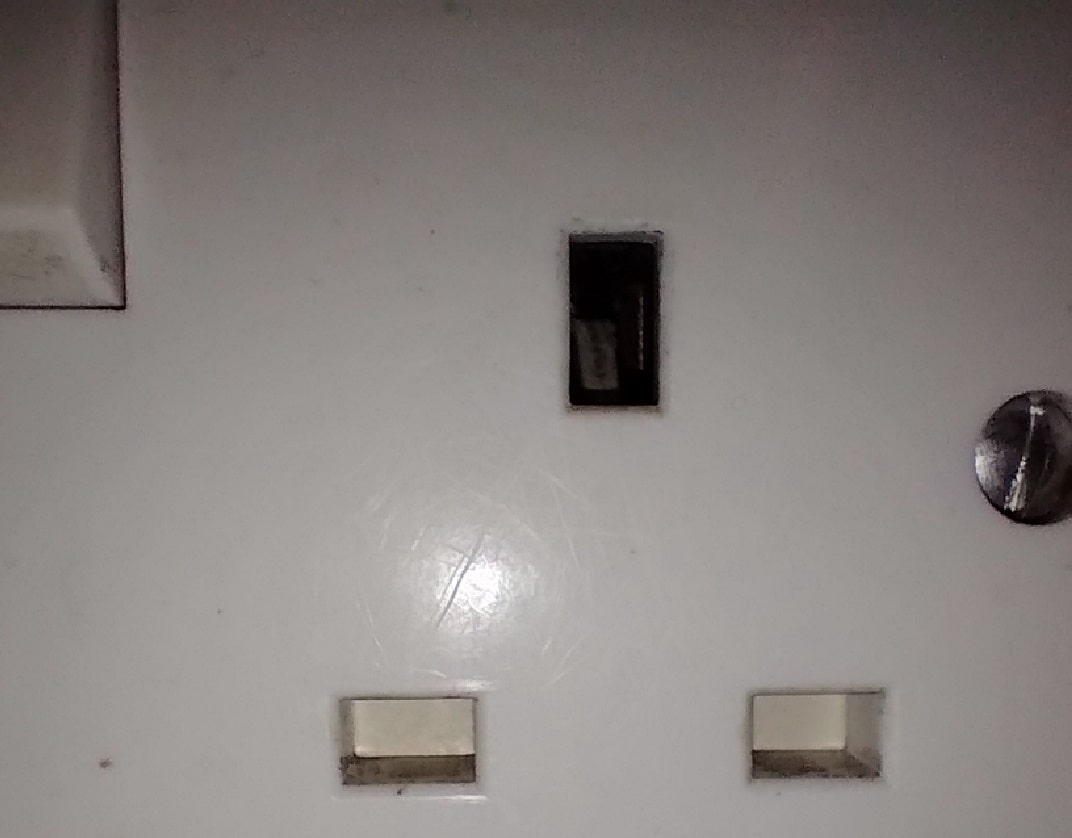
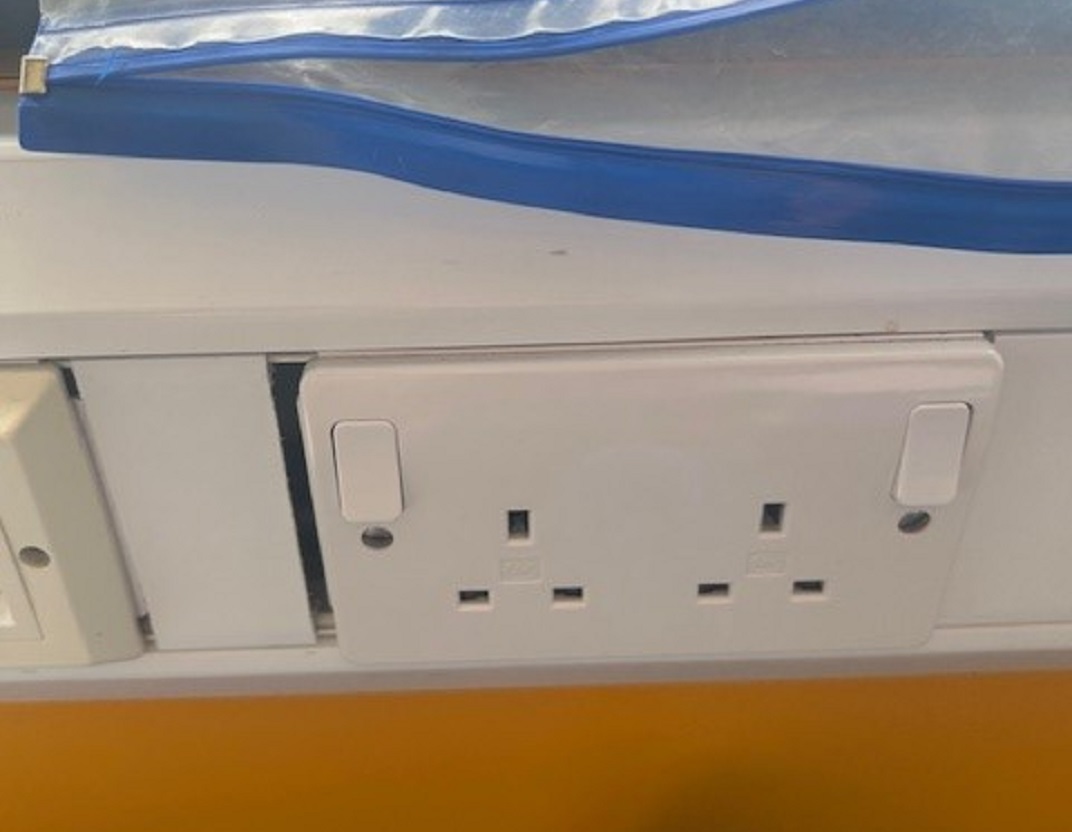
13 Amp plug socket with intact shutters
trunking infill has left gap into which small fingers could gain access or remove infill entirely, making access to live conductors much easier.
Fixed Appliances
Fixed appliance casings need to be checked for obvious damage (panels broken, missing bits or dented). If the fixed appliance is connected via a flexible cable to a fused outlet check for damage to sheathing and movement of the flex where it enters fused outlet and appliance.
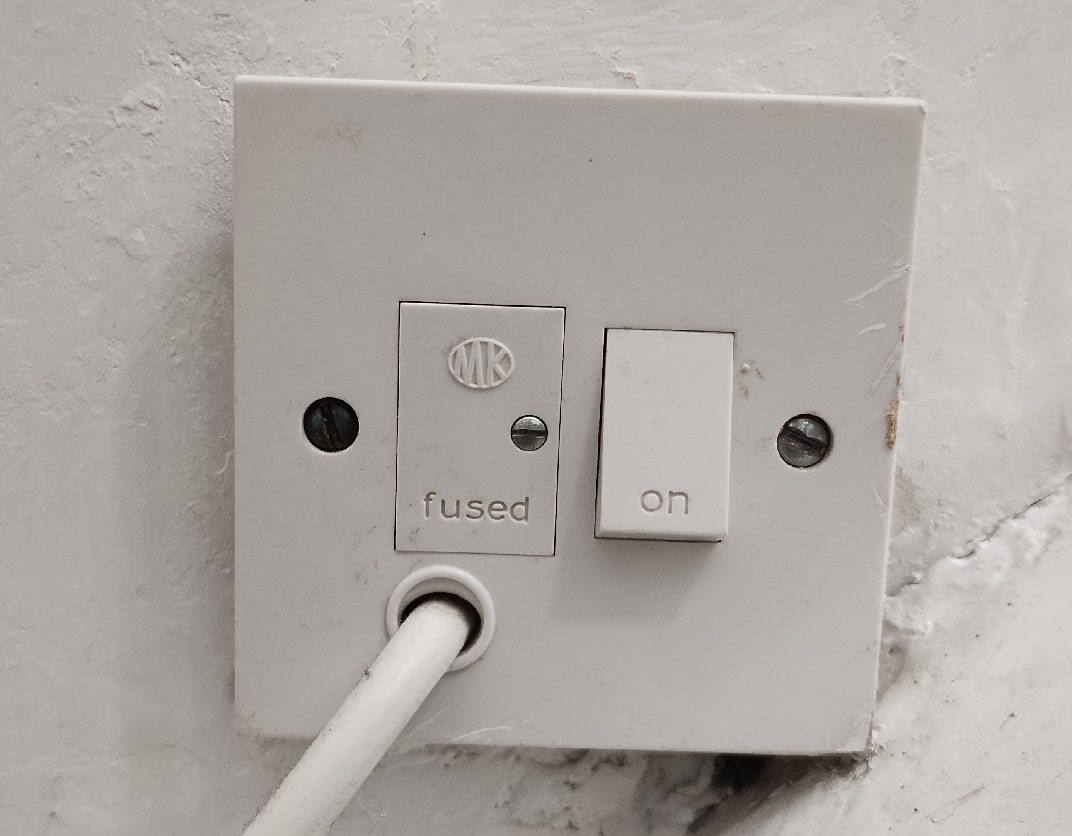
switched fused spur outlet - check for movement of flex where it enters face plate
Portable Appliances
Portable applances are any electrical appliances which are powered through plugging them into a mains socket outlet. The casing should be checked for obvious damage (panels broken, missing bits or dented). The power lead should be checked for damage to sheathing and movement of the flex where it enters both the appliance and 3-pin plug. Check the plug for physical damage and missing, loose or bent pins, and signs of overheating. Any taping is most likely to cover an issue (poorly fitted plug, abraded flex etc.). Appliances should not be used in this condition and must be removed from service to be repaired or disposed of.
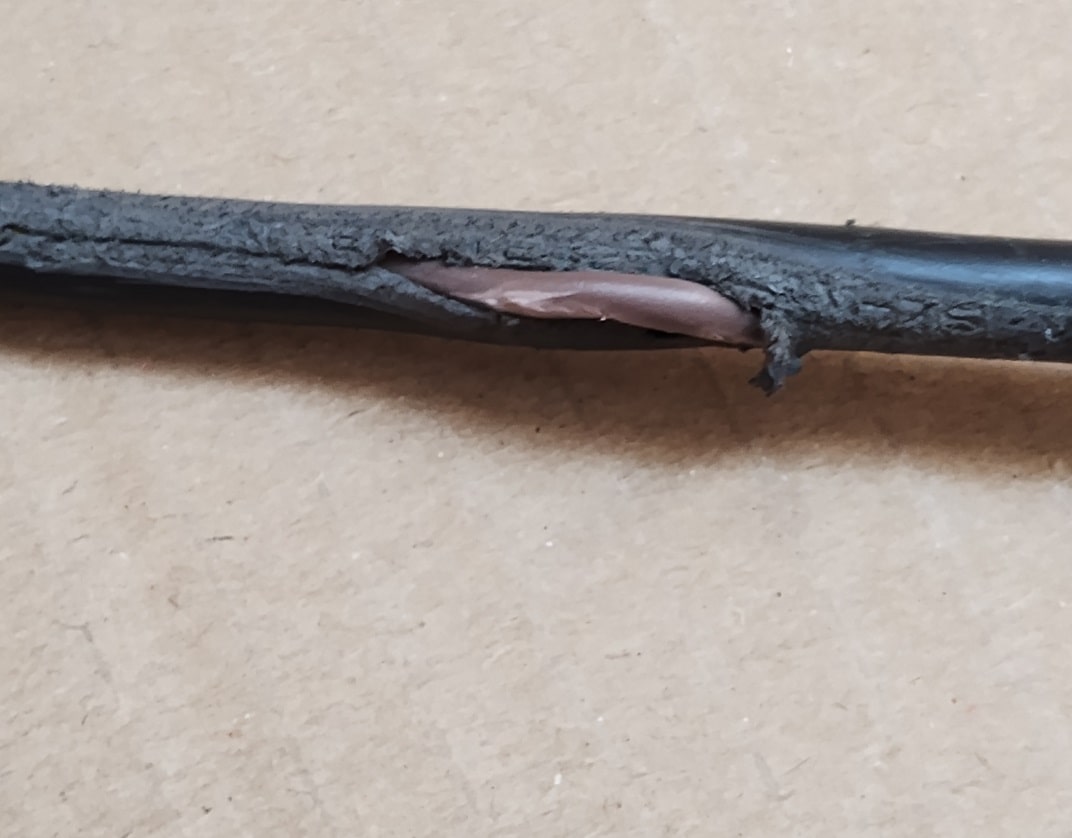
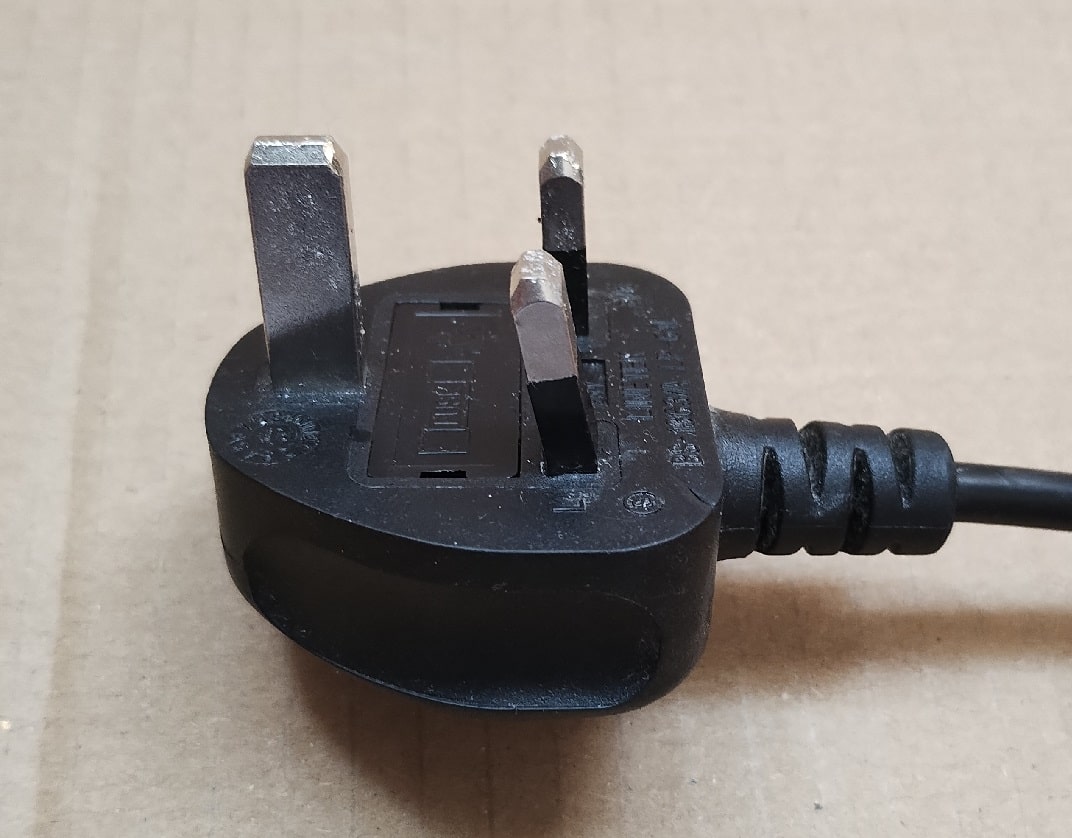
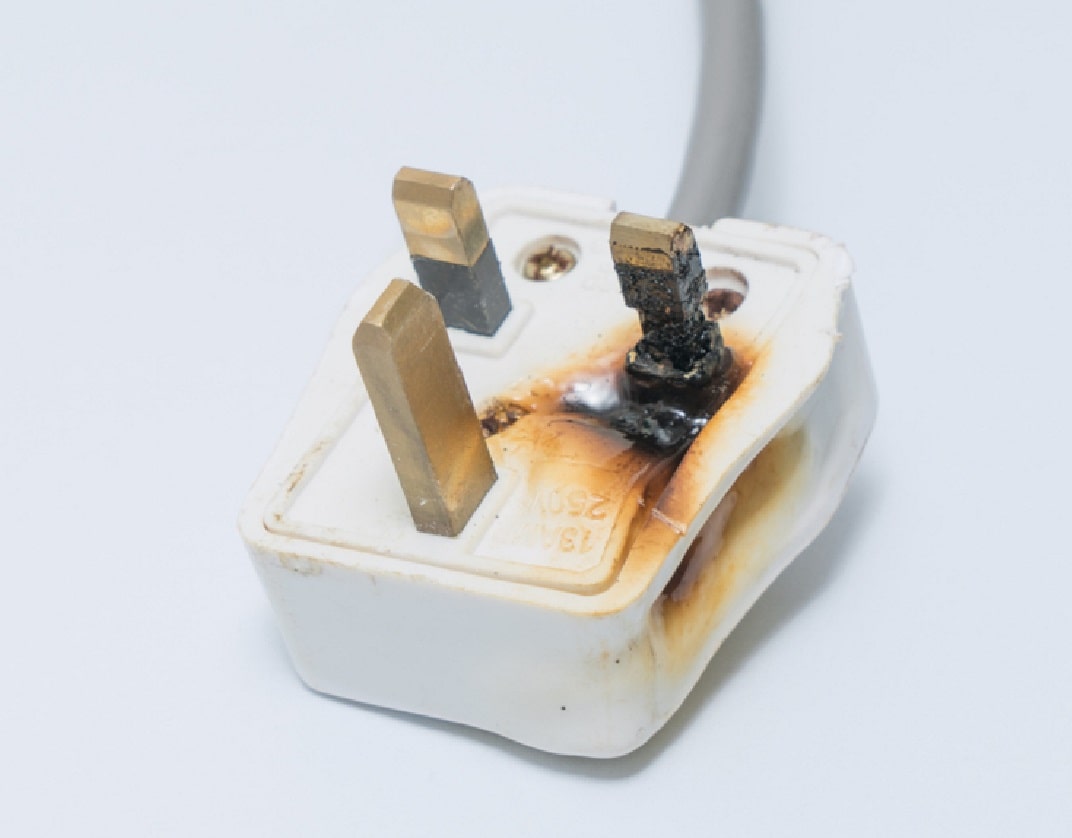
abraded flex showing exposed inner core insulation - in some cases inner insulation will have been abraded to point where copper core is visible
plug with bent pin
plug showing early stages of burning (note dissolved plastic on pin)
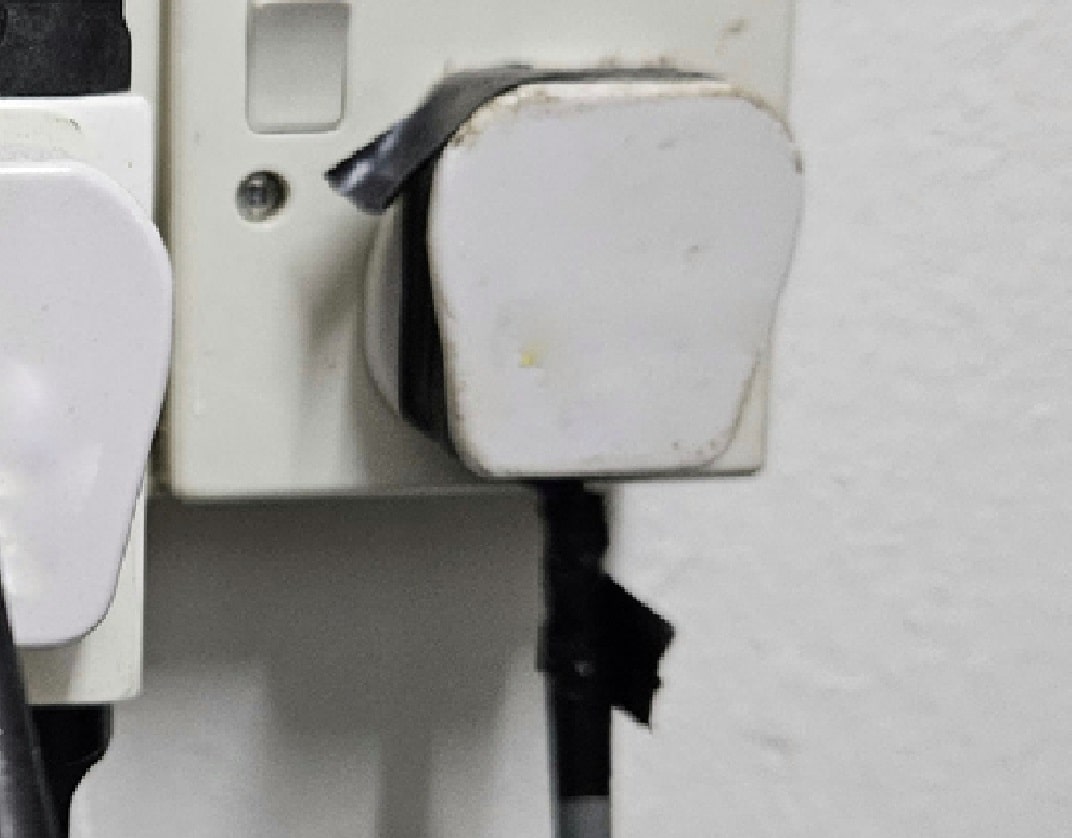
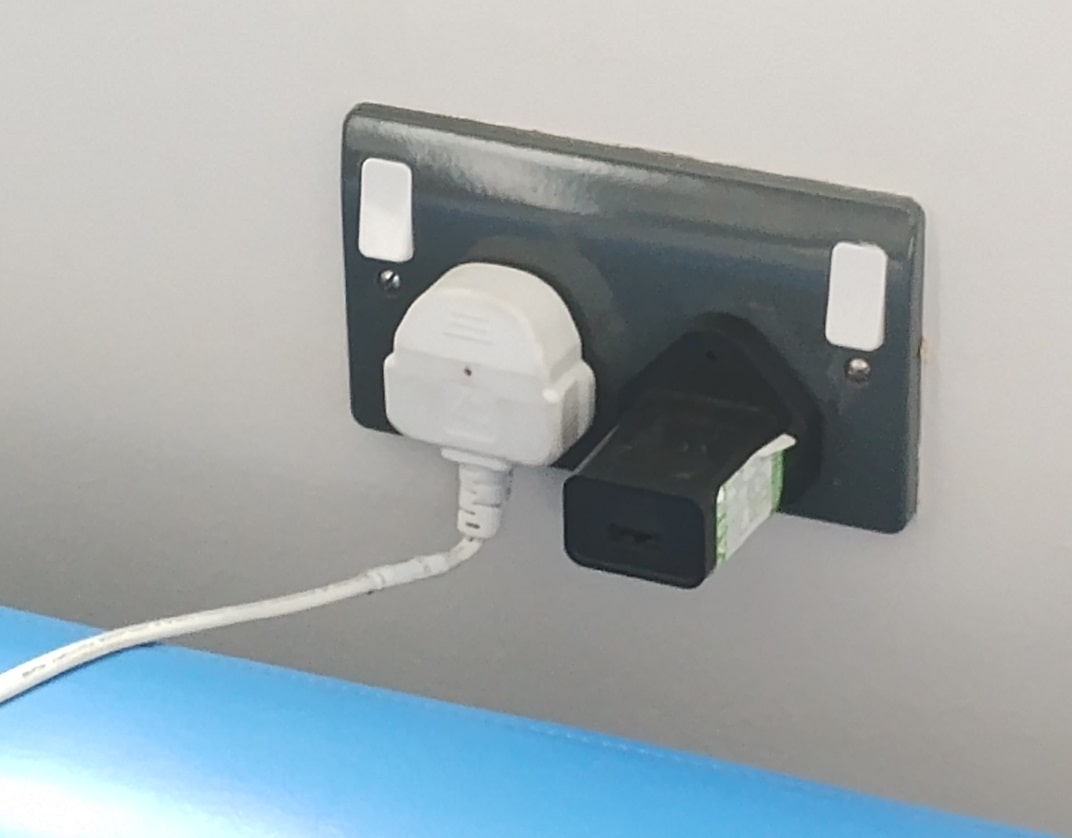
Taped plug and flex - likely hiding issues
Plug lead being subjected to extreme deviation (right angle) due to location of socket in relation to furniture
Extension Leads
Extension leads should be checked as per portable appliances. Extension leads are designed to operate up to a particular current rating (mainly 10 or 13 Amperes (Amps). Exceeding the lead's maximum amperage is likely to result in a fire. Check the rating of the extension lead (note reeled extension leads will show two ratings one with the extension cable fully wound and the other fully unwound). Check that the combined amperage of any appliances which could be plugged into the lead at once is below the lead's stated maximum amperage. To work out the amperage for an appliance take its stated wattage and divide by the mains voltage (240v in th UK).
Extension leads must not be "daisy chained" (e.g. one extension lead plugged into another). The wall outlet the first extension lead is plugged into has a maximum rating of 13 Amps, the more outlets on extension leads the greater the risk that it will be overloaded. Extension leads must be supported if they would otherwise put load on the socket outlet.
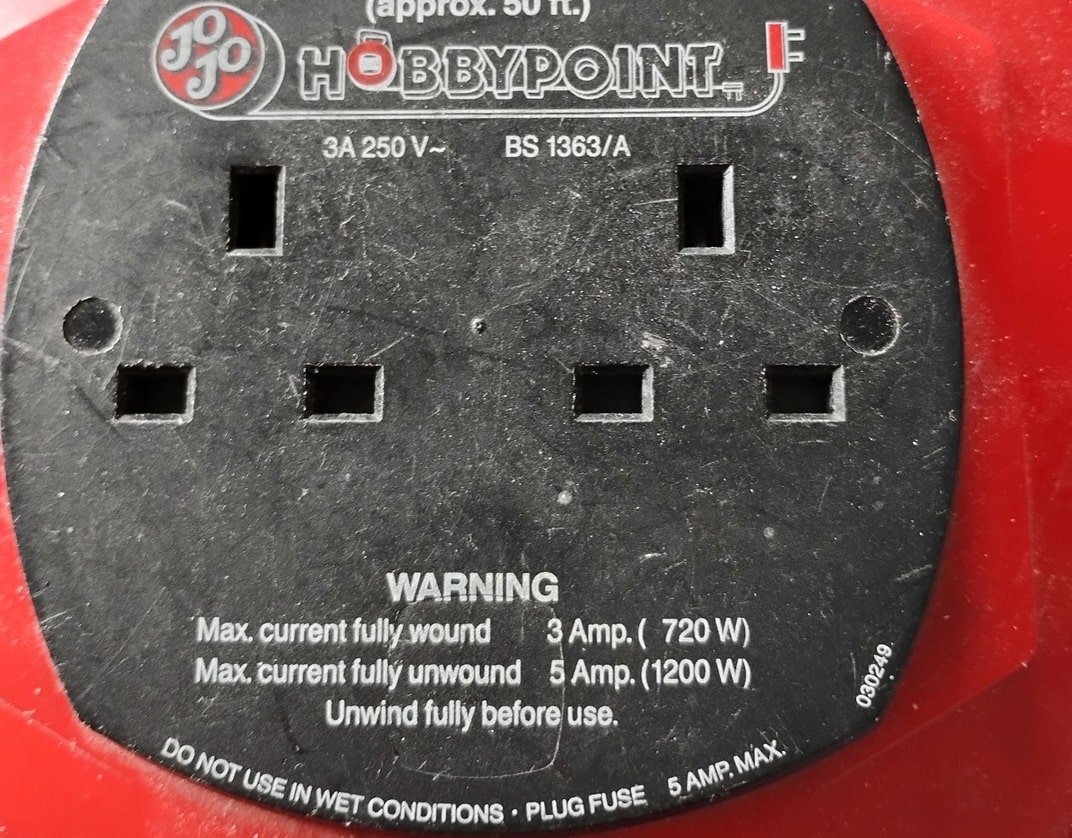
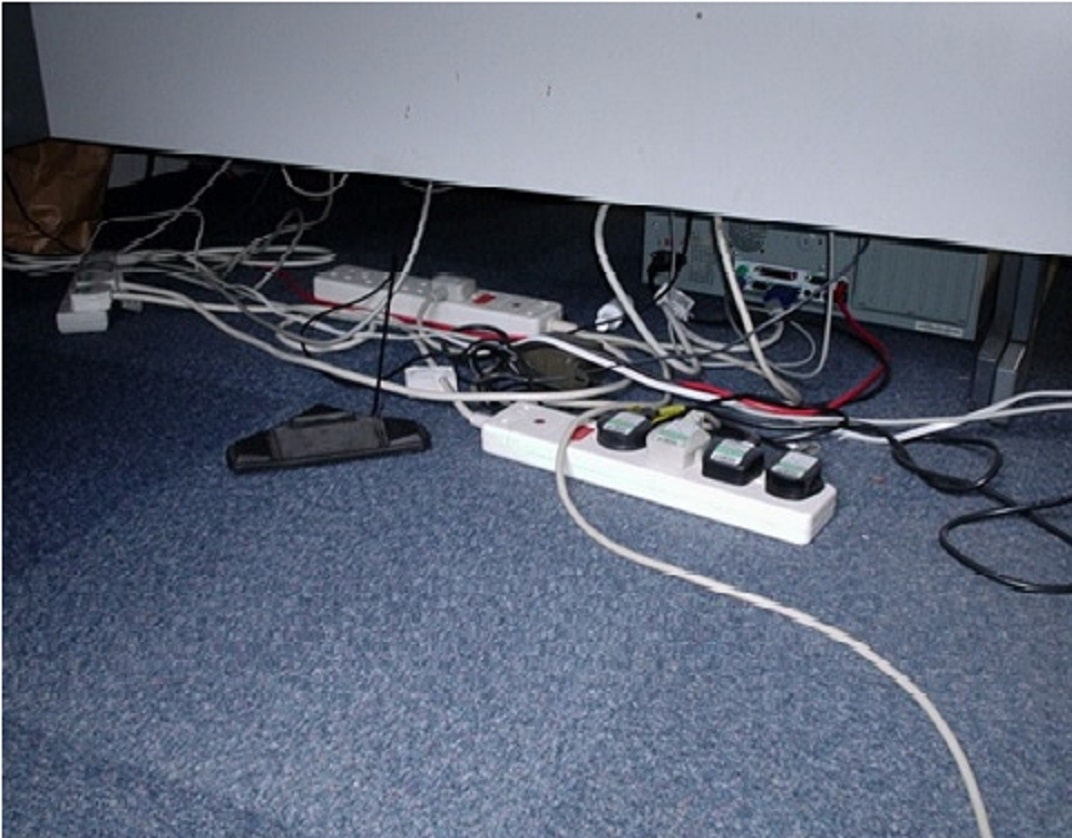
extension reel variable amperage capacity
daisy chained extension leads, with multiple appliances plugged in
Adapter Blocks
These devices plug into the mains outlet and have multiple further outlets on their faces. These devices should not be used as they can cause physical damage to the internal parts of the socket outlet, they also can cause overloading in the same way as an extension lead can.
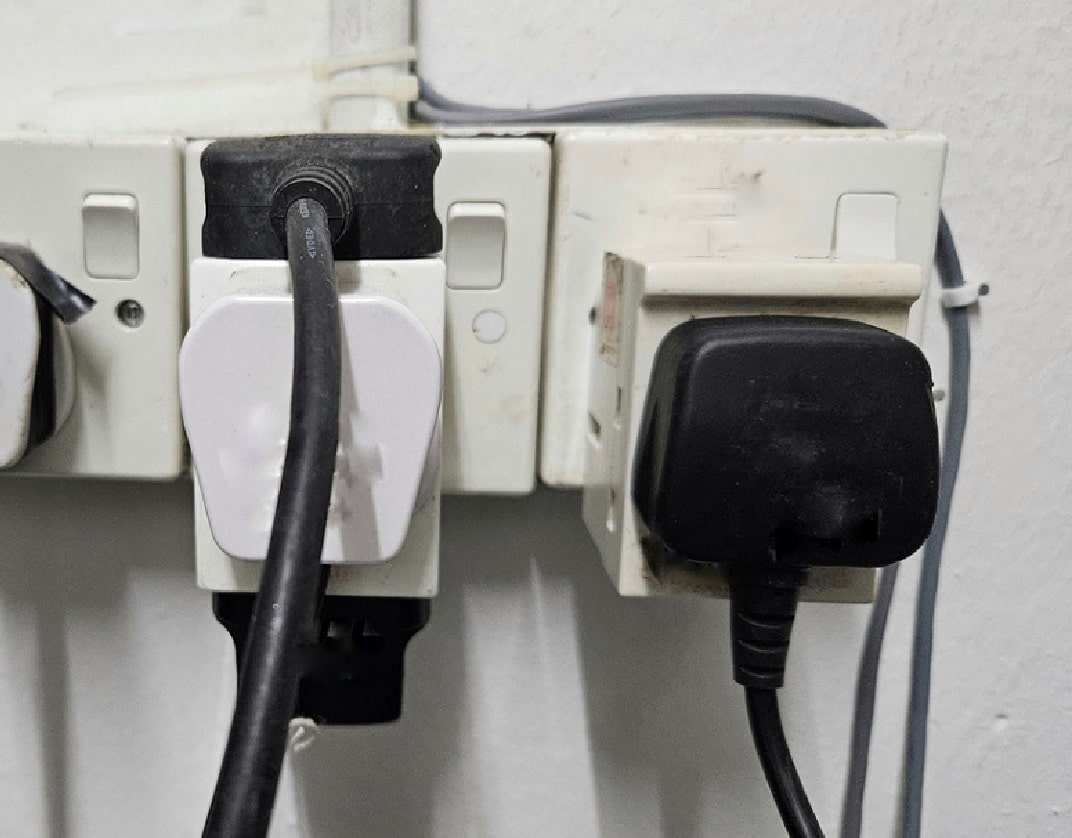
socket outlets with adapter blocks inserted and multiple appliances plugged into the blocks
Return to Classroom Health & Safety Checklist PDF Return to Classroom Health & Safety Checklist main page
